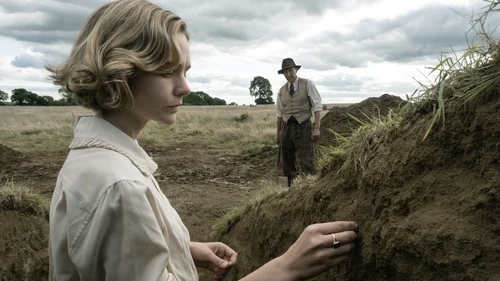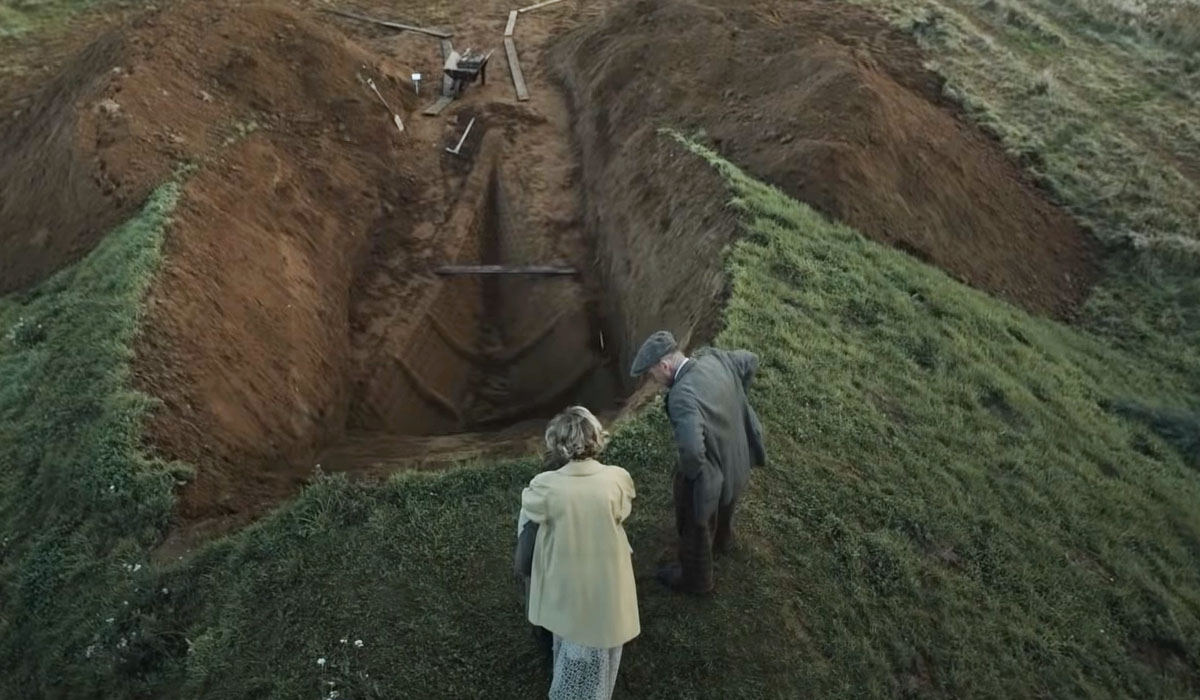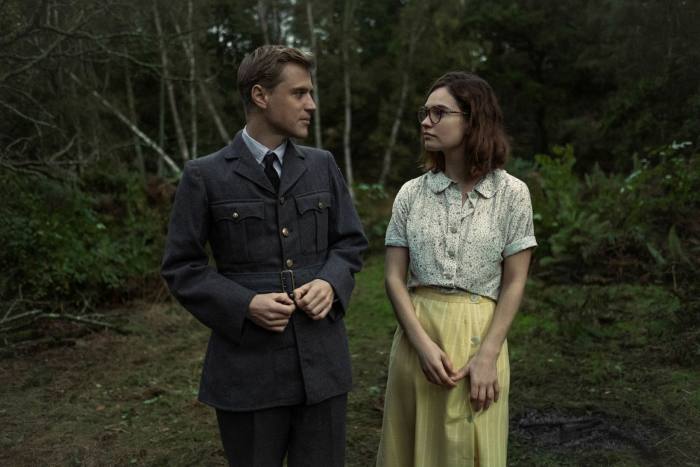The new movie The Dig spends about 15 minutes not knowing what it’s about. Or rather, it might know, but it’s not telling us out here in the viewing audience. A rich woman has ordered large mounds on her Suffolk estate to be dug up, but we don’t really know why, as the movie barrels into the story as if it’s already told us all this, and weren’t we paying attention? But at about that 15-minute mark, what it’s about is revealed: It’s about everything.
Can a movie really be about everything? Surely not. But The Dig is a lot more expansive in scope than a handful of archaeologists, excavators and other museum types bickering over who gets credit for digging up a large seafaring vessel that was dragged up from the river and buried in mounds of dirt, more than a millennium ago. It’s about the people who buried it, why they chose such an extravagant burial gesture for its occupant, and what it says of the England a thousand years ago. But it also speaks to the England a thousand years from now, as it’s a film interested in no less than the driving purpose and meaning of human existence, with a fondness for astronomy that seems to look forward to humanity of the future.
Sounds like a lot for a film that might sometimes be confused for a picturesque but otherwise yawn-inducing period piece made for the BBC. But in the hands of director Simon Stone and writer Moira Buffini, the new Netflix film about the 1939 dig of the site dubbed Sutton Hoo feels up to the task. The woman who ordered it, Edith Pretty (Carey Mulligan), had become fascinated with the spiritual following the death of her husband some five years earlier, and the unnatural mounds on her property suggested to her great mysteries and possible artefacts. Rather than just the idle fancies of a woman with too much money and not enough to do with it, it represented some kind of quest for understanding the history of the species, especially since declining health limited her own future prospects.
The dig is led at first by Basil Brown (Ralph Fiennes, playing about the least book smart character of his career), a self-taught excavator who develops a fondness for Pretty and her young son. As the iron rivets of the boat begin to stand out in relief against the coffee ground-coloured dirt, the magnitude of the project is revealed, bringing in British Museum types with claims of jurisdiction over the land due to the historical significance of the find. See, this is not Viking as initially suspected, but probably dating back far earlier. But with war on the horizon, and England soon to be ground zero, none of these ancient artefacts may be safe from what’s to come.
By all accounts, the Sutton Hoo dig was a big deal, but given the age of other antiquities in museums the world over, these Anglo-Saxon period findings from the sixth or seventh century may not seem particularly noteworthy if you are an archaeological novice. (And outside of having seen Raiders of the Lost Ark, most of us are.) However, they revealed much about a poorly documented period of history in that region of the world and were a sensation at the time.
What matters more from a viewer’s perspective, though, is how these events impact on the ambitions and emotional lives of the characters. The Dig is mostly successful on this, but it has a curious structure that eventually causes it to resemble more of an ensemble piece than a story belonging to the two main characters initially introduced, Edith Pretty and Basil Brown. In the second half these characters fade into the background as probably the biggest rising star in the cast, Lily James, takes over much of the dramatic arc in her role as Peggy Piggott, an excavator who only enters the narrative at about the halfway point. A love triangle between her, her stiff husband (Ben Chaplin) and another excavator (Johnny Flynn) has its own dramatic momentum and is certainly absorbing in its own right, but it feels like a strange narrative offshoot of where the story began.
There’s something appropriate about the film’s effort to encompass a number of different storylines, though, as The Dig makes the case that this is only about particular human beings living in mid-century England to the extent that they are custodians of an ongoing lineage of human history that passes through them, as it does through all of us. We have no reason to disbelieve that this evidence of human endeavour from ages ago leaves them in this sort of contemplative state. In their words and imaginings, these forbears are almost conjured into existence out on that foggy terrain. The onset of World War II – including planes flying overhead in preparation – lends an additional significance and sense of fragility to this history.
It feels like there should be more going in The Dig than there is, yet the accumulation of a small amount of plot and a generous amount of character development leaves the viewer plenty satisfied by the end. It’s the type of film that makes you wonder what other history is buried out there, maybe just below our feet if we knew about it, and how that would gives us perspective on the lives we are living today and will live tomorrow.


